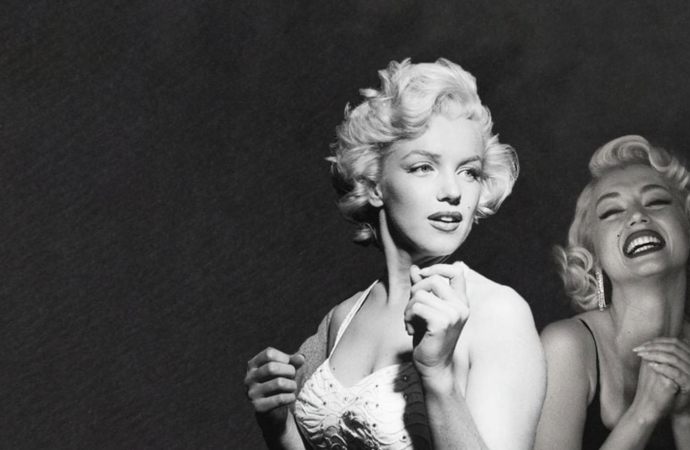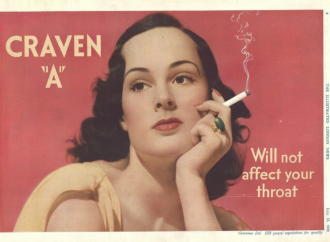Marilyn Monroe’s legacy continues to captivate the world, long after her passing, with her radiant smile, sultry charm, and almost otherworldly allure. But Monroe wasn’t just a Hollywood icon; she crafted a persona so powerful that the “Marilyn Monroe” brand still thrives in today’s film, fashion, and beauty industries. Behind the blonde bombshell image and

Marilyn Monroe’s legacy continues to captivate the world, long after her passing, with her radiant smile, sultry charm, and almost otherworldly allure. But Monroe wasn’t just a Hollywood icon; she crafted a persona so powerful that the “Marilyn Monroe” brand still thrives in today’s film, fashion, and beauty industries. Behind the blonde bombshell image and the glitzy Hollywood lifestyle was a complex woman with vulnerabilities and an unyielding drive to succeed. While the public saw Monroe as a carefree and flirtatious sex symbol, Norma Jeane Mortenson—later renamed Marilyn Monroe—faced profound struggles that shaped both her personal journey and the persona she would create. The story of how she became “Marilyn Monroe” is not just the tale of a pop-culture icon, but the rise of a brand that remains deeply relevant today.
From Norma Jeane to Marilyn Monroe
Before Marilyn Monroe, there was Norma Jeane—born into a life of uncertainty, surrounded by foster homes, orphanages, and constant instability. These early years fostered deep insecurities in her, but also a desire for transformation, inspired by the glamour of old Hollywood movies and the pin-up culture. When Norma Jeane began her modeling career, she quickly realized how much attention she could command, especially with her platinum hair and flirtatious smile.
The name “Marilyn Monroe” was crafted by Hollywood executives who wanted a more marketable persona for her than the modest, girl-next-door “Norma Jeane.” They chose “Marilyn,” inspired by Broadway star Marilyn Miller, and “Monroe,” from her family name, creating a name that exuded star quality. This was the start of Norma Jeane’s metamorphosis, where she sacrificed parts of her true self for fame. However, as the Marilyn Monroe persona grew, so did the power of the brand—a woman who was both approachable and tantalizing, embodying the very essence of Hollywood allure.
Crafting the Iconic “Blonde Bombshell” Persona
Norma Jeane’s transformation into Marilyn Monroe truly solidified when she embraced the “blonde bombshell” image. Dying her hair platinum blonde was a bold statement—leaving behind any trace of her past and stepping into a role that symbolized the ultimate male fantasy. This new look, complete with tight dresses, bold red lipstick, a beauty mark, and a breathy voice, became the foundation of a persona that Hollywood couldn’t resist. It also served as a kind of escape for her, offering confidence and sensuality far removed from the struggles of her upbringing.
But it wasn’t just about looks. Monroe studied the magazines, observed other actresses, and practiced her speech, walk, and poses. She understood the power of sex appeal and made it her tool for stardom. By fully adopting this “blonde bombshell” image, she captivated audiences and left film producers eager to cast her. Monroe didn’t just fall into this persona; she actively created it, using her allure as a way to position herself as the most desirable star in Hollywood.
The Power of the Male Gaze
Monroe’s magnetic presence soon propelled her to the top of Hollywood, especially in an era that glorified female sexuality. Post-war America was entering a new consumer-driven age, where female sexuality became a potent marketing tool. No one embodied this better than Monroe. She learned how to play with the camera to capture the audience’s attention, embodying a persona that blended flirtation, warmth, and mystery—qualities that cemented her status as a universal sex symbol.
The Iconic “Dress Scene” and Its Voyeuristic Nature
The famous scene from The Seven Year Itch—where Monroe’s white dress blows up in the wind—was not just a cinematic moment; it was a spectacle for the public. Thousands of onlookers yelled “Do it again!” as they eagerly witnessed her coquettish persona in full bloom. The moment turned into mass voyeurism, with men clamoring to see her allure and directors knowing that these kinds of iconic moments would only add to her fame. Monroe was fully aware of the power her image held and played along, using these moments to propel herself further into stardom.
This blending of self-awareness and exploitation solidified the Marilyn Monroe brand, making it a phenomenon bigger than the woman herself. It became clear that Monroe’s appeal wasn’t just about her—people wanted to see the spectacle, to witness the iconic Marilyn in action. The “dress scene” remains one of the most memorable images in film history, encapsulating Monroe’s ability to turn even the most ordinary moments into something legendary.
The Playboy Moment: Fame Without Consent
Monroe’s fame took a sharp turn when the first issue of Playboy featured her on the cover in 1953—photos she had never approved for that purpose. These photos were taken years earlier when she was struggling to pay her rent, and Monroe was paid very little for them. Hugh Hefner purchased the rights to these photos and used them to launch Playboy, elevating both the magazine and the Marilyn Monroe brand. However, Monroe never received any compensation for her involvement, and she had no say in how her image was used.
This incident highlighted a recurring theme in Monroe’s life: powerful men took ownership of her image, using it to build their empires while leaving her on the sidelines. Hefner’s career skyrocketed thanks to that first Playboy cover, and later, he even bought a burial plot next to Monroe. The irony of this is that she had no say in either the photos or the posthumous associations, but her image continued to fuel the brand. Monroe’s legacy became increasingly intriguing because she was both desired and commodified—her allure was exploited by others, yet it fed into the very mystique that kept people fascinated with her.
The JFK Birthday Performance: Crafting a Femme Fatale Aura
Monroe’s performance of “Happy Birthday, Mr. President” in 1962 remains one of her most talked-about moments. Dressed in a skin-tight, nude-colored gown, she performed in a way that was both sultry and mysterious, fueling rumors about her alleged affair with President John F. Kennedy. The soft, seductive delivery of the song added to the enigma of her persona, further solidifying her place as the ultimate symbol of desire.
This performance wasn’t just about singing; it was about Monroe’s ability to manipulate her image, turning every appearance into an iconic moment. The gown, encrusted with over 2,500 hand-sewn crystals, became a symbol of her glamour and sexuality. The dress itself, alongside the performance, remains one of Hollywood’s most famous moments, cementing Monroe’s legacy as an icon of beauty and allure.
A Woman of Power and Vulnerability
While Monroe’s public persona fulfilled the fantasies of many, she was far from helpless in shaping her own career. She fought for more complex roles, formed her own production company, and was determined to rise above the stereotypical “dumb blonde” label. She studied acting at the Actors Studio and was passionate about improving her craft. Yet, she was often confined by Hollywood’s demands, with studios casting her in roles that emphasized her sex appeal over her acting skills.
At the same time, Monroe used her image strategically, turning her sexualization into a bargaining chip. She became the woman every man wanted and every woman envied, but behind the scenes, she struggled with her own personal desires for artistic fulfillment. This paradox—between empowerment and exploitation—was central to the Marilyn Monroe brand.
The Enduring Influence of the Blonde Bombshell
Hollywood’s obsession with the blonde bombshell continues today, with actresses like Pamela Anderson, Margot Robbie, and Sydney Sweeney often cast in roles that highlight their physical allure before their full range of talent is recognized. Monroe’s legacy as the quintessential blonde bombshell continues to influence the roles that these modern actresses play, but also highlights the challenges they face in being taken seriously beyond their looks.
Despite the progress made, the pressures that Monroe faced still resonate today. Her experience of being valued primarily for her looks, yet struggling to be seen for her full potential, is still a conversation in Hollywood. Modern actresses may have more control over their careers, but the industry’s obsession with physical appearance remains a defining factor.
The Tragic End and Its Impact on Her Legacy
Monroe’s sudden death in 1962 left her legacy frozen in time. Her tragic end, marked by drug dependency and emotional struggles, only added to her mystique. The public’s fascination with her life, particularly her last days, reinforced the image of Monroe as a tragic, misunderstood star. Over time, her image became more about her prime years than the complexities of her life, ensuring her place in history as a symbol of beauty and sadness.
Her brand remains powerful because it hasn’t been complicated by a changing career or deeper personal revelations. The focus on her best years has solidified Monroe’s immortality in the public’s mind, making her an icon whose influence continues to shape pop culture today.
Why Monroe Still Resonates
Marilyn Monroe’s story, a blend of empowerment, exploitation, and emotional vulnerability, continues to resonate with people around the world. Her brand symbolizes an era of glamour and Hollywood’s fixation on the idealized female figure. But deeper themes of loneliness and personal struggle give her story a timeless quality that transcends the superficial aspects of her image.
Monroe’s legacy is a complex one—she was both celebrated and marginalized, a symbol of desire yet a woman with unfulfilled emotional needs. Her story reminds us that even those who seem to have it all may still crave acceptance and connection. The Marilyn Monroe brand lives on because it reflects universal themes of ambition, fame, and the search for validation.

















Leave a Comment
Your email address will not be published. Required fields are marked with *